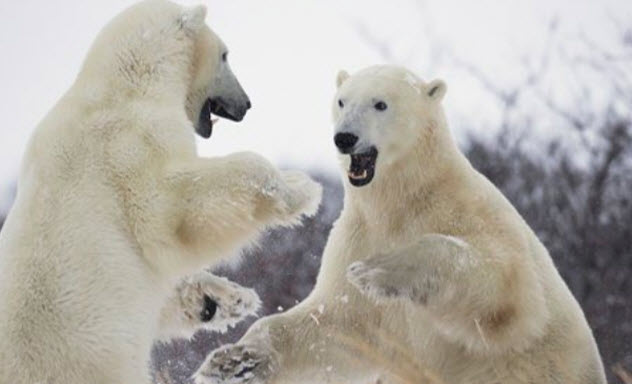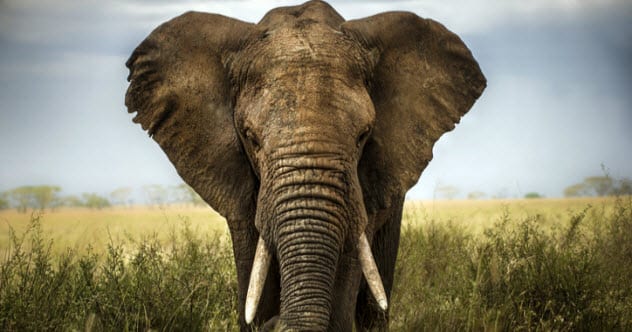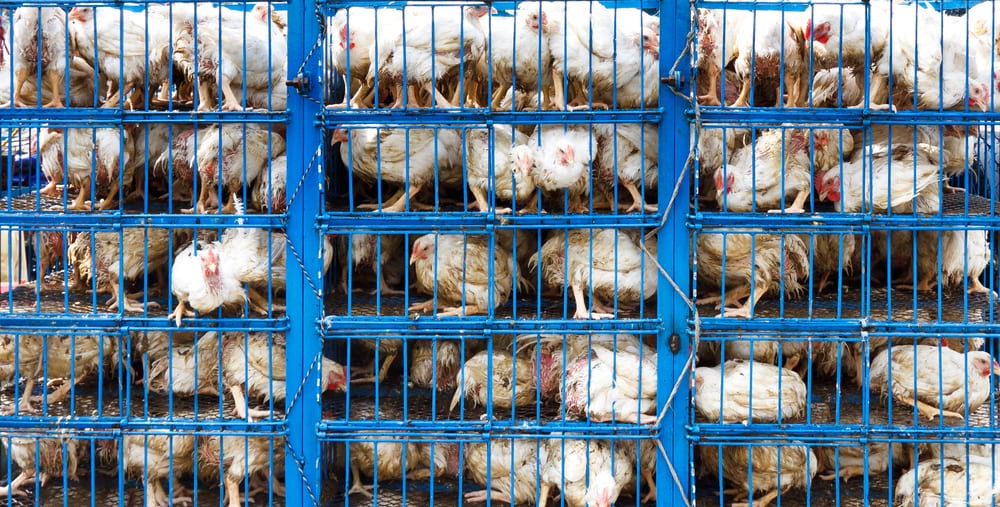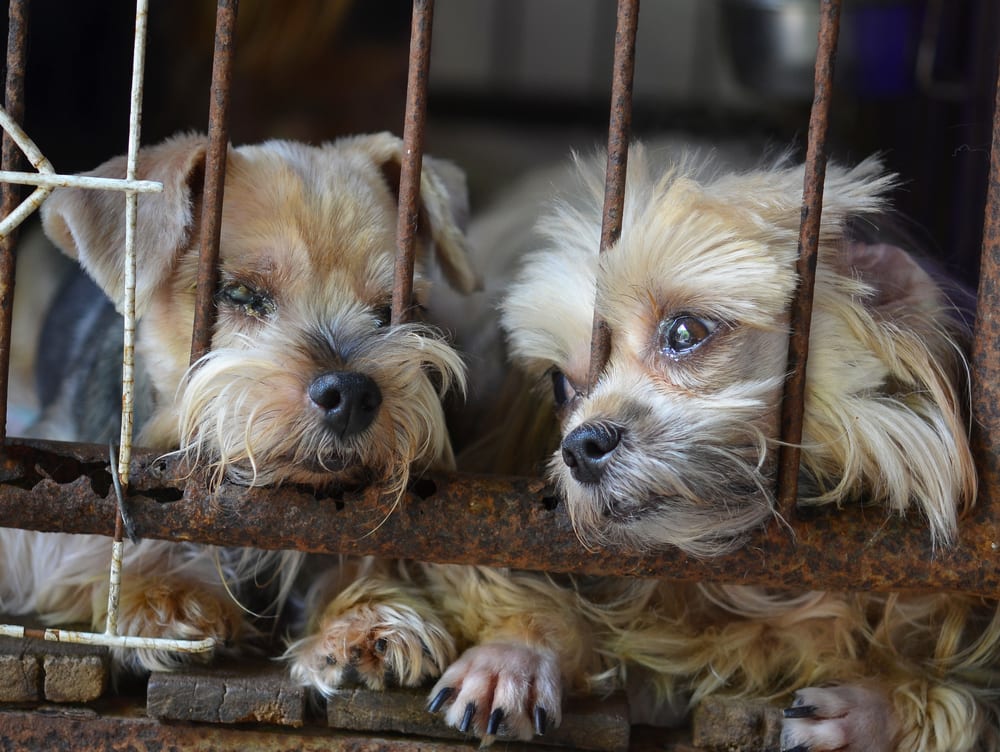 Mysteries
Mysteries  Mysteries
Mysteries  History
History 10 Surprising Stories About the Texas Rangers
 Humans
Humans 10 Philosophers Who Were Driven Mad by Their Own Theories
 Miscellaneous
Miscellaneous 10 Video-Game-Worthy Weapons and Armors from History
 Weird Stuff
Weird Stuff 10 Psychics Who Accurately Predicted Wartime Events
 The Arts
The Arts 10 Pieces of Art Inspired by a Broken Heart
 Health
Health 10 Science Fiction-Sounding New Medical Treatments
 History
History 10 Surprising Facts About the Father of Submarine Warfare
 Space
Space Ten Astonishing New Insights into Alien Worlds
 Weird Stuff
Weird Stuff 10 Bizarre Summer Solstice Rituals Still Practiced Today
 Mysteries
Mysteries Top 10 Haunting Facts About the Ghost Ship MV Alta
 History
History 10 Surprising Stories About the Texas Rangers
 Humans
Humans 10 Philosophers Who Were Driven Mad by Their Own Theories
Who's Behind Listverse?

Jamie Frater
Head Editor
Jamie founded Listverse due to an insatiable desire to share fascinating, obscure, and bizarre facts. He has been a guest speaker on numerous national radio and television stations and is a five time published author.
More About Us Miscellaneous
Miscellaneous 10 Video-Game-Worthy Weapons and Armors from History
 Weird Stuff
Weird Stuff 10 Psychics Who Accurately Predicted Wartime Events
 The Arts
The Arts 10 Pieces of Art Inspired by a Broken Heart
 Health
Health 10 Science Fiction-Sounding New Medical Treatments
 History
History 10 Surprising Facts About the Father of Submarine Warfare
 Space
Space Ten Astonishing New Insights into Alien Worlds
 Weird Stuff
Weird Stuff 10 Bizarre Summer Solstice Rituals Still Practiced Today
Top 10 Things Cancel Culture Has (surprisingly) Not Canceled Yet
An actress who expresses a conservative viewpoint in liberal Hollywood. A teacher suspended for daring to assume a boy in her class goes by the pronoun “he.” A chef accused of cultural appropriation for cooking an ethnic dish. There’s no doubt that cancel culture – the attempt to ruin someone’s personal or professional life due to a perceived insult or insensitivity – is only getting worse.
In a woke world obsessed with meaningless microaggressions, it’s amazing how many macroaggressions continue to go largely unpunished. In fact, the list is so lengthy that a sub-list could be created for animal-related offences alone. So we made one.
Here are ten items that, hopefully, will wake up the woke to focus on something more important than playing purity police online.
Top 10 Great Scientists Who Would Be #Cancelled Today
10 Polar Bear Killings

Don’t polar bears have enough to worry about without jackass trophy hunters shooting them? With the Arctic sea ice they rely upon for hunting, resting, mating and dens rapidly diminishing due to climate change, it is estimated that less than 25,000 are left in the wild. Polar bears’ plight led to the US including them on its Endangered Species List in 2008 – and things have only grown worse since then.
Considering this, the idea that people are still killing polar bears for sport and money is disturbing to say the least. Even more insane is WHERE this practice is still legal; while one might expect it of Russia – a country whose macho dictator never found a barechested photo-op he didn’t like – the country to visit to senselessly slaughter a polar bear is Canada. Ah, Canada: clean air, universal healthcare and polar bear murder.
Why hunt them? Because killing a polar bear can make one not only a sick asshole but a RICH sick asshole. Polar bear skins can fetch tens of thousands of dollars; like hunting, such sales also are somehow still legal.
Per Freedom of Information divulgences, nearly 9,000 polar bears were killed by hunters in the Arctic between 2007 and 2016. More than 50,000 polar bears have been killed since 1960 – twice as many as today’s remaining population.
9 Seal Beatings

All reputations for being polite and generous aside, those Canadians are a bloodthirsty lot.
Canada’s annual commercial seal hunt is the largest slaughter of marine mammals on the planet. The hunt’s primary target is the harp seal, which might be the most adorable animal on Earth. Even more disgustingly, some 97% of the harp seals slaughtered are pups less than three months old. Weapons of choice include wooden clubs, hakapiks (large ice-pick-like clubs) and guns.
The hunts occur predominantly on ice floes in two regions, both off Canada’s East Coast: the Gulf of St. Lawrence, west of Newfoundland and east of the Magdalen Islands; and an area called the “Front,” northeast of Newfoundland. The mass killings come in addition to the harp seal population’s increasing vulnerability to diminishing sea ice.
The perverse practice is typically undertaken by local fishermen, who sell the seals’ fur and oils to supplement their income. Approximately 6,000 fishermen participate each year. The Humane Society estimates that more than ONE MILLION seals have been clubbed, stabbed and shot to death in the last FIVE YEARS.
The understandable international backlash has prompted a widespread and well-funded disinformation campaign by the Canadian government. What’s next, Canada? Drowning baby unicorns perhaps?
8 Sea Turtle Eyeglass Frames
“Comfort and refinement go hand in hand,” the website of France-based manufacturer Maison Bonnet reads. Matching its suspect morals with even more suspect English, it continues: “They provide the harmony between the model and the individual face, the true luxury of handmade glasses. Traditional handcrafting is essential. Only a firm hand can do justice to a one-off item.”
Harmony? Justice? I’m not sure the sea turtle butchered to make the spectacles frames would think so. An alarming example of how accepted this practice still is, Maison Bonnet goes on to namedrop famous customers, including two French Presidents: Francois Mitterrand and, more recently, Jacques Chirac.
The lingering legality of making products from sea turtle shells in certain areas has, unsurprisingly, spurned illicit poaching in other places. For example, last year, it was reported that traffickers were capturing and shipping thousands of sea turtles from Florida to Asia and other markets, where some can fetch up to $10,000. Over the years, the trade has caused the deaths of millions of turtles to make such frivolities as combs, eyeglass frames, guitar picks, ornaments and cheap jewelry.
Utilizing certain animals for food or clothing is one thing, but do we really need to be making extraneous items from slaughtered animals? Regardless, Maison Bonnet claims that its production process “totally respects the natural cycle of the sea turtles.” A sea turtle could not be reached for comment.
7 Ivory products

Given the worldwide fervor over the ivory trade – a matter made urgent due to the severely endangered animals whose deaths fuel it, especially elephants – it’s easy to assume that underdeveloped countries with ineffective law enforcement would have the most difficult time policing the globally-banned practice.
But surprisingly, among the biggest drivers of the illegal ivory trade is… Japan, one of the most advanced, law-abiding nations on Earth. The reason is something incredibly mundane: a signature-substituting seal. Called hankos: the small stamps are used in lieu of signatures for anything from opening a bank account to signing an employment contract.
According to Hideki Arami, a third-generation hanko carver with a shop in Tokyo’s busy Shibuya district, the best hanko ivory comes from the center of the tusk, where the bone is firm and flawless. What a wonderful reason for bringing multiple species to the verge of extinction.
Selling ivory legally entails proving that it isn’t new, meaning it was “harvested” before poaching was banned in 1989. Per the African Wildlife Foundation, while Japanese law states ivory tusks must be registered before a sale, the process has remained notoriously lenient. Owners often do not need to provide verifiable proof of how, where, or when tusks were acquired – opening the door for illegal ivory to enter Japan’s legal marketplace.
6 Animal Products in Perfume

Wearing perfume? Then you’re probably spraying liquified fauna on yourself. Animal parts are still widely used as ingredients in various fragrances.
One example is civet, a catlike animal with a long tail and pointed snout native to Africa and much of Asia. Its perineal glands produce a crude, buttery-yellow paste that turns darker with age. At full strength, the tincture smells fecal and nauseating, but when diluted it has a floral scent. Civets are “farmed and harvested” (read: born imprisoned and slaughtered en masse) at facilities in Ethiopia, with their paste exported to perfumeries in Europe and North America.
Like leathery scents? Then you’re likely wearing beaver taint. Vintage leathery notes are typically achieved via castoreum, which comes from the castor sacs of beavers, who use it to mark territory. After killing the beaver, harvesters smoke or sun-dry the paste-filled castor sacs, which come to resemble dried figs (yum!). The paste’s aroma eventually mellows into the smell of sweet, clean leather.
The hyrax, an African species resembling a large guinea pig, is another furry critter with perfume-centric secretions. Often called “African stone,” hyraceum forms when the animals’ urine and feces (they live together in colonies, and typically relieve themselves in a common area) petrifies. Luckily for the hyrax, this process takes hundreds of thousands of years, meaning their contribution to the perfume industry doesn’t carry a death sentence.
These animal materials were once used in huge doses in fragrances such as Miss Dior and No 5 and they continue to be used to this day in many perfumes across the industry.
5 Bone China
Bone china is a type of porcelain made from a significant amount – at least 30%, but usually closer to 50% – of animal bone ash. Why bone? Because it makes for an especially strong ceramic that offers premium chip resistance and high levels of whiteness and translucence. Among other benefits, the sturdiness provided by bone ash allows bone china to be produced in thinner cross-sections than other porcelains.
From its initial development in the early 1800s, bone china has historically been a British product; in fact, the term “English porcelain” often refers to bone china. In most cases, the bone comes from cows, though pig bone also may be used – prompting Middle East manufacturers to make halal versions that are verified cow-only.
So, is bone china ethical? Proponents argue that it basically just uses the bones of animals already set to be slaughtered for meat. Critics counter that, while less problematic than, for example, killing polar bears for sport or sea turtles for eyeglasses, bone china is simply an unnecessary animal-derived item. In addition to doing no favors to the animals, opponents contend, bone china imposes on vegetarians and people who avoid animal products.
In addition, human bone ash has been identified on rare occasions, and no one wants to eat off of great-grandma.
4 Industrial Cattle Production
Despite their growing ranks, animal rights activists calling for completely ending meat-eating remain overwhelmingly in the minority. Among other issues, such posturing and proselytising ignores the fact that humans are naturally omnivores – eaters of both fauna and flora.
However, a more understandable candidate for cancellation is the way some meat is produced. For example, the American livestock stream is awash in antibiotics, used to keep cows and pigs in unhygienic, tightly-packed factory farms “healthy.” Not only is this indicative of the filthy, crowded conditions these animals experience, but also adds to the growing problem of bacterial resistance due to antibiotics overuse. A worrisome 13.6 million kilograms of antibiotics are used for US livestock each year, nearly four times the amount distributed for direct human consumption.
A legitimate case also can be made that humanity is eating too MUCH meat. More than six million animals are killed for human consumption every hour; in one lifetime, the average American will consume the equivalent of 11 cows, 27 pigs, and 2,400 chickens.
Another reasonable concern is the meat industry’s contributions to global warming: animal agriculture is responsible for an estimated 18% of global climate change. Each day, cows alone produce 150 billion gallons of methane, which is 25-100 times more heat-trapping than carbon dioxide. That’s right: cow farts are a flatulent factor in climate change.
3 Industrial Poultry Production

As concerning as some meat sector practices are, the fashion in which the United States produces poultry deserves an entry all its own.
Again, the issue here isn’t a total chicken-eating ban. The idea that we’re close to replacing real chicken with the sort of highly-processed, often high-calorie plant-based concoctions popularized as beef and pork substitutes is nonsense. Besides, faux chicken is notoriously harder to create, with most products discontinued.
Regardless, poultry often is raised in highly problematic conditions and, given its food industry track record, the US is unsurprisingly among the most blameworthy. Each year, America produces more than 44 billion pounds of chicken. That’s a lotta wings.
However, the trade off for making that much meat is truly horrific conditions for the chickens. US chickens are typically raised in crowded coops covered in droppings and devoid of sunlight. There, the birds are aggressively force fed to meet Americans’ ever-growing demand for cheap meat. Over their two-month lifespan, chickens grow so rapidly that their joints, legs, hearts and lungs are significantly compromised.
After slaughter, US factory chickens are rinsed in chlorine. And if you’re wondering whether blasting a food product with a dangerous chemical is problematic… well, join the rest of the world. Many countries ban the import of US poultry for this reason and, recently, Brits cried foul (or rather, fowl) over a backroom deal that allowed US chickens into the UK food stream in exchange for a broader post-Brexit US-UK trade deal.
2 Fur Farms
Humans have been turning furry animals into clothing for millennia. So as with the loud-but-miniscule minority who want to disallow all meat-eating, animal activists who want to cancel all dead animal-derived clothing – such as fur coats and leather – are unlikely to prevail anytime soon – though they certainly help the polluting paint manufacturers with all that red paint they buy!
However, one aspect of fur clothing is particularly problematic: fur farms, which raise foxes and minks in cramped, cruel conditions for the singular reason of fattening them up for maximum fur production. The first two sentences of an investigative report by the Humane Society are so powerful that they’re difficult to read:
“By the end of his life, the arctic fox, just 1 year old, has grown so large he barely fits in the bare wire cage on a farm in Asia. Overbred to produce a big pelt, he suffers from an eye condition made worse by obesity: His lashes grow inward and scratch constantly against his cornea.”
Estimates vary, but all available figures would place the number of foxes and minks slaughtered on fur farms in the tens of millions annually. In a developed world that has largely banned the commercial killing of dogs and cats (except for South Korea, which should be ashamed of itself because dogs aren’t food, ever, full stop), the idea that similar animals are being factory farmed for something as frivolous as fur is difficult to justify – and that’s putting it kindly.
1 Puppy Mills

The Sato Project is a nonprofit dog rescue organization headquartered in southeastern Puerto Rico. Its mission is to save as many of the 300,000 stray dogs that roam the Connecticut-sized Caribbean island. The Sato Project team manages to feed, shelter, vet and ultimately fly more than a thousand dogs per year to forever homes on the US mainland (including one lucky sato, Vector, who joined this author’s family in 2013).
Multiply Puerto Rico’s plight by thousands, and you begin to scratch the surface of the number of desperate dogs in need of good homes. Against such a backdrop, the fact that pully mills still exist is, simply, disgusting and unacceptable.
A puppy mill is a commercial dog breeding facility in which the health of dogs is disregarded to maintain a low overhead and maximize profits. There are an estimated 10,000 puppy mills in the US alone, catering to customers who, for whatever reason, simply must have a pure breed or designer dog (oh cool! It’s another f*cking Labradoodle!).
While there are laws regulating facilities that sell to pet stores and through certain online forums, nothing can be done about black market operations that sell directly to consumers. The only way to eliminate puppy mills is for people to stop being so choosy about breeds and simply give a needy dog the home it deserves.
10 Insane Decisions That Nearly Ruined Pop Culture Classics








